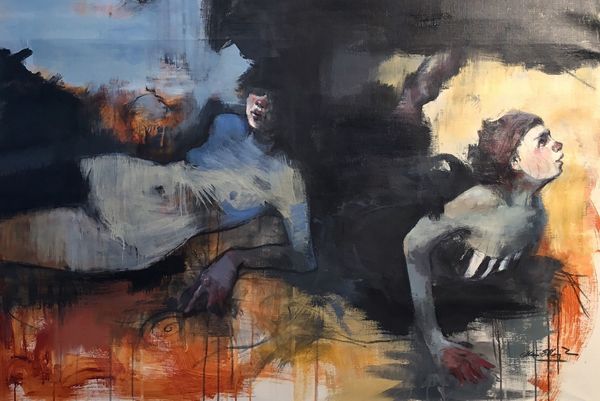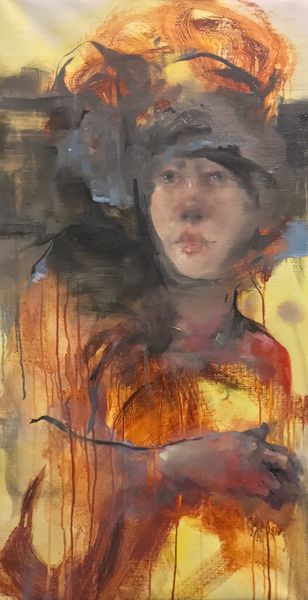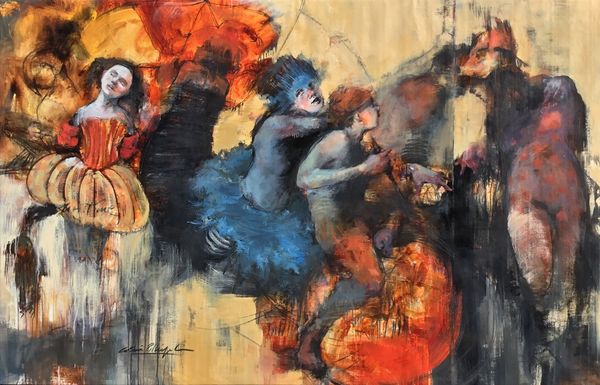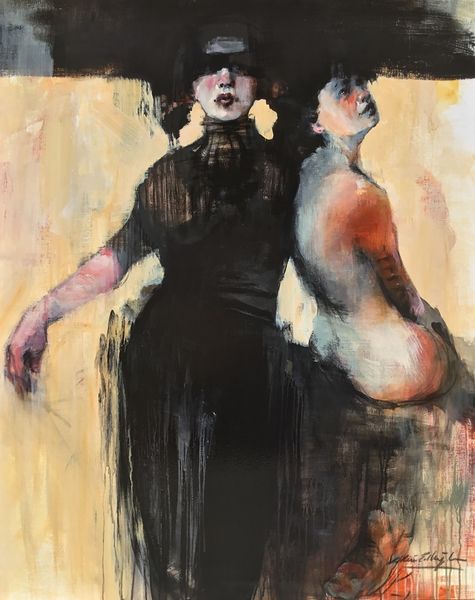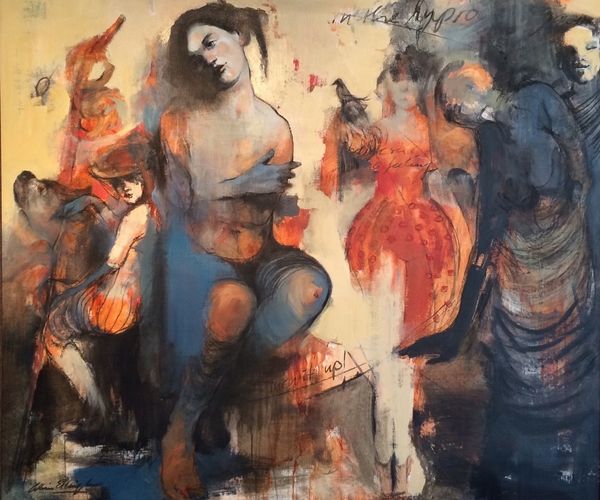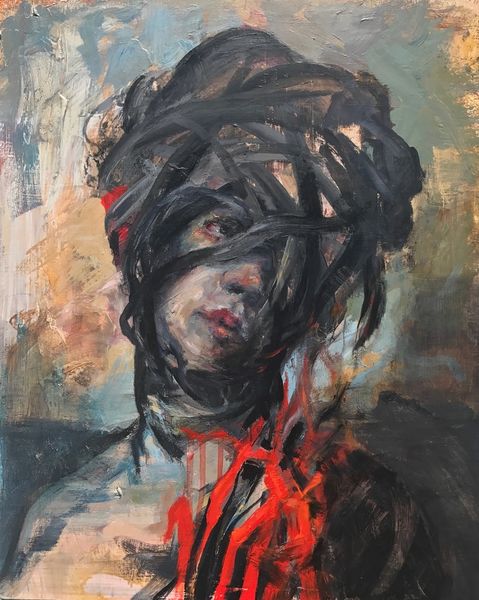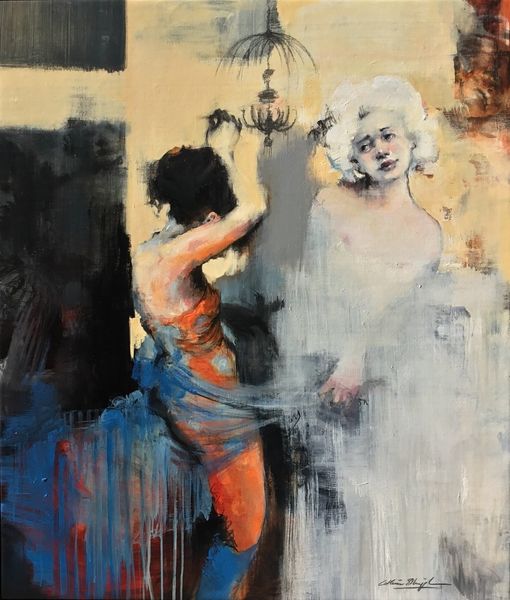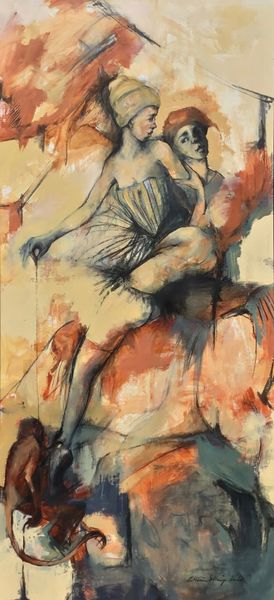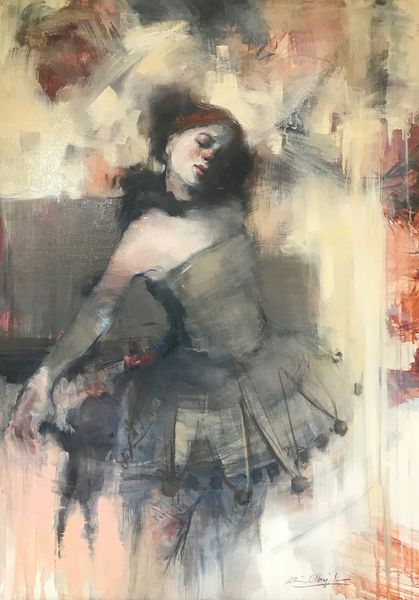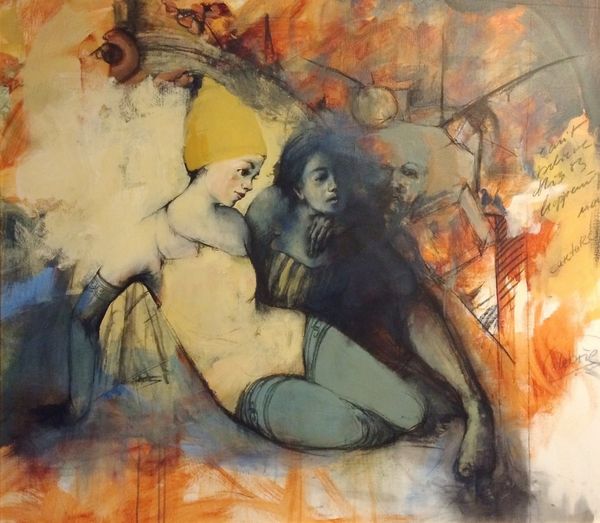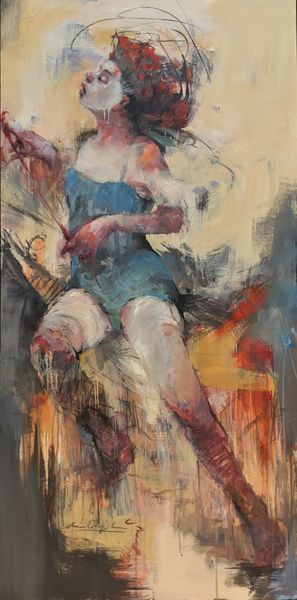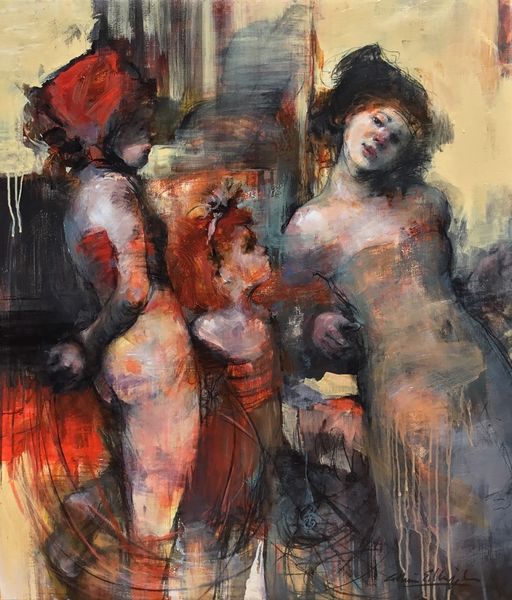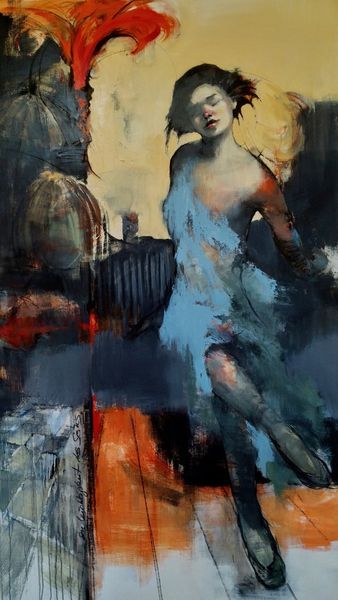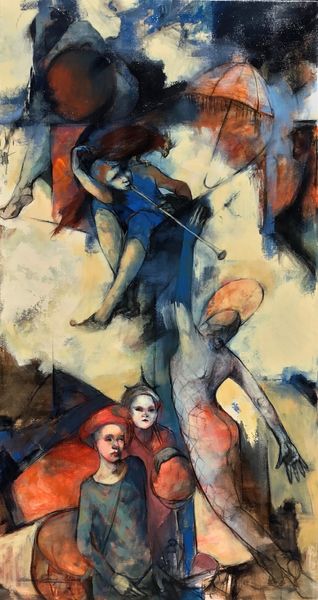
painting, acrylic-paint
#
abstract-expressionism
#
figurative
#
abstract expressionism
#
painting
#
acrylic-paint
#
figuration
#
neo expressionist
#
acrylic on canvas
#
neo-expressionism
#
group-portraits
Copyright: Modern Artists: Artvee
Editor: This painting, titled "Wonderland," by Cathrine Edlinger-Kunze, is executed with acrylic paint and certainly makes a statement. It has a really haunting atmosphere. I’m intrigued by these figures; they feel both present and like ghosts. What do you see in this piece? Curator: I see a commentary on representation, particularly of women throughout art history. Notice the deliberate ambiguity of the figures, their faces obscured, almost erased. It compels us to question whose gaze dictates how women are seen and how they’re placed within historical narratives. What power dynamics do you think are at play here? Editor: That's fascinating. I hadn't considered it that way. It does seem like they’re being presented but simultaneously hidden. Is that blurring, then, a form of resistance? Curator: Exactly! Think about the performative aspect of "femininity." These women seem trapped within those expectations, yet the artist subverts it. The bold, gestural brushstrokes suggest a struggle, almost a rebellion against being confined. Do you notice how the color choices impact that reading? Editor: Now that you mention it, the stark contrast between the dark clothing and the vibrant oranges is very striking. Almost like a visual scream. Curator: Precisely. This isn’t just a pretty picture. It's a challenge to the conventional, a questioning of identity and prescribed roles. By reclaiming that narrative, the artist creates space for alternative readings and contemporary dialogues. Editor: That is quite powerful. I really appreciate how it connects art history with a modern message of self-definition. Curator: And hopefully it encourages us all to question the power structures at play in shaping our own perceptions. It is about the historical understanding of intersectional representation through art, that moves away from historical norms.
Comments
No comments
Be the first to comment and join the conversation on the ultimate creative platform.
